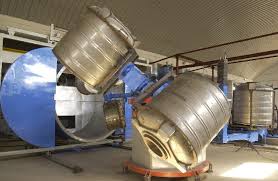
Exploring New Techniques to Improve Processes in Roto Molding
Rotational molding is an incredibly flexible plastic material production procedure that you can use to produce great-quality pieces and elements for various sectors. This technique requires putting a natural powder or liquefied plastic-type fabric in to a mold, which can be then rotated so that you can evenly distribute the fabric. The high temperature and push developed by the rotation helps to form and form the part as desired. In the following paragraphs, we are going to take a closer inspection at Rotational Molding and its several software.
How Rotational Molding Works
Rotational molding begins with uncooked Plastics Rotomolding in either powder or liquid type. The natural powder or liquid is put in a metal, perish-cast aluminium, or steel mold which has been warmed up to conditions between 200°F and 500°F levels. Then, the mold is rotated on two axes while being heated up so that the resin inside equally distributes through the entire cavity of your mold. This generates even wall structure thicknesses throughout the completed product or service which increases its strength and durability.
The key benefits of Rotational Molding
Rotational molding provides several specific advantages over other types of plastic fabrication procedures including shot molding or blow molding. To start with, rotomolding is much faster than conventional methods simply because it relies on gravitational pressure and centrifugal causes rather than strain to complete the molds. Moreover, this producing procedure also allows for sophisticated designs and fashions that are challenging to achieve making use of other strategies because of its capacity to produce 1-piece parts with complex information like contours and sleek transitions between distinct sections of the component. Additionally, rotomolding also creates items with steady wall surface thicknesses rendering them more robust and a lot more durable compared to those made along with other procedures. Ultimately, because there are no razor-sharp sides or corners when working with rotomolding, it is good for developing kid-safe goods such as toys and play ground gear without sacrificing any high quality in design or design.
Verdict:
As you can see from my summary over, rotational molding is definitely an incredibly adaptable developing method that provides many benefits over conventional manufacturing strategies such as shot molding or blow molding. Not only does it enable complex designs with consistent wall surface thicknesses additionally it operates rapidly while producing safe items that are tough enough for several years of use with minimum servicing required. If you’re looking for a method to develop higher-top quality parts quickly without having to sacrifice any quality inside your layout then rotomolding could be just the thing you’ve been looking for! With its many advantages over standard manufacturing functions, it’s easy to see why this process is now so popular among organizations sizeable and modest alike – why not give it a go?